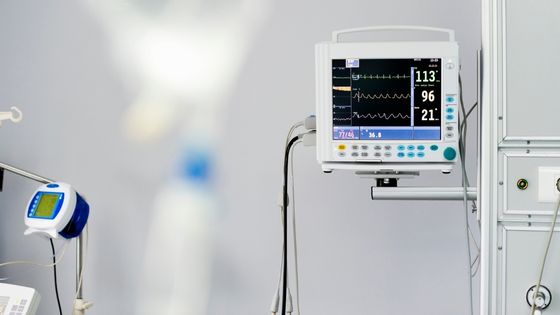Healthcare providers may keep tabs on their patients’ acute or chronic diseases while out of the hospital or clinic using remote patient monitoring (RPM) devices. They give the clinicians real-time information about the patient’s illness status to make proactive clinical choices.
Devices that allow patients to monitor their health from afar help them become more aware of their health. Patients who use RPM devices regularly are more likely to see long-term beneficial health effects.


In today’s market, there is a variety of remote patient monitoring equipment. Learn about seven popular devices used in RPM programs below:
Blood Pressure Monitor
One of the most often utilized RPM devices is a blood pressure monitor. A patient may determine their heart rate and blood flow using these devices.
RPM monitoring of blood pressure is necessary. More than 500,000 people died in the United States in 2018 because of hypertension as a primary or potential cause, according to the Centers for Disease Control and Prevention (CDC).
Doctors can use these RPM devices to monitor a patient’s blood pressure remotely, which helps them better manage hypertension. In addition, “white-coat syndrome,” when patients’ blood pressure rises owing to the stress of seeing a practitioner in person, may be avoided.
Electrocardiogram (ECG) and stethoscope
You can use a stethoscope and an ECG to record heart and lung sounds. Those suffering from heart disorders such as arrhythmias or coronary artery disease often use an ECG. It is possible to hear the heart, lungs, and intestines thanks to a stethoscope’s ability to amplify interior noises.
Eko DUO, the first ECG + digital stethoscope of its sort, is used by several HRS customers to remotely record heart and lung sounds. You can perform patient self-monitoring through Eko and give the readings to the physician via virtual visits or on the portal for later clinical assessment. Alternatively, you may also store the recordings for future clinical review. Providers may remotely listen in on the heart and lungs of their patients using the DUO, which is an all-in-one cardiac evaluation that enables early identification and better-tailored therapy.
Blood Glucose Monitor
Maintaining blood glucose levels is critical for diabetics’ overall well-being. If you have diabetes, you may not notice symptoms until you have hypoglycemia (low glucose) or hyperglycemia (high glucose). When left unchecked, this may result in life-threatening issues.
Some blood glucose monitors don’t even need the patient to collect blood, which is a massive convenience for people with diabetes. Blood glucose monitoring around the clock is possible with the use of blood glucose monitors, which communicate data directly to healthcare practitioners.
Pulse Oximeter
A pulse oximeter can measure patients’ oxygen saturation or blood oxygen levels. The gadget detects the slightest variations in the patient’s oxygen delivery. A pulse oximeter may assist in treating various conditions that influence blood oxygen levels, such as asthma and pneumonia.
Wearables
A patient’s steps, heart rate, fall risk, and sleep may be monitored using activity trackers. Patients’ diaries give doctors a glimpse into their everyday lives, allowing them to understand better how their daily activities impact their health and symptoms. Patients’ treatment plans might be informed by the activity data collected by the provider. Fitbit and Apple Watch are two of the most popular fitness trackers in the market.
Scale
Scales used in RPM programs are excellent instruments for monitoring patients’ health. Patients with cardiac conditions, for example, need to keep a careful eye on their weight, as even a few pounds might significantly influence medication or necessitate a visit to the doctor’s office.
As hypertension affects many Americans, obesity is a severe health problem. 42% of Americans were obese in 2018, according to the CDC. Patients’ needs and objectives are better met with daily scale readings, which allow clinicians to tailor their treatment accordingly.
Thermometer
A patient’s fever (body temperature) may be quickly and accurately measured using a Bluetooth thermometer, giving healthcare professionals the information they need to proceed with treatment.
Suppose you want to get an accurate reading. In that case, you can use Bluetooth thermometers in various ways, including non-touch digital models that scan the forehead (temporal artery) or contact thermometers that are put under the patient’s tongue.
Thanks to remote patient monitoring equipment, a healthcare physician can learn more about a patient’s symptoms over time rather than simply during a single in-person visit. Providers use them to do their duties more efficiently, effectively, and in a more data-driven way. The use of remote patient monitoring devices empowers patients to take control of their healthcare by allowing them to monitor their health and track changes in their condition.

























